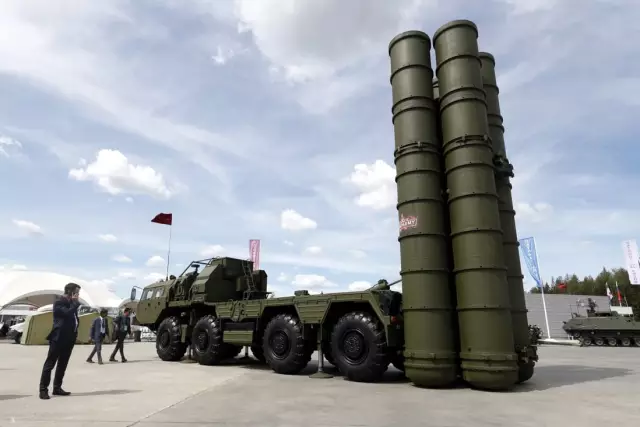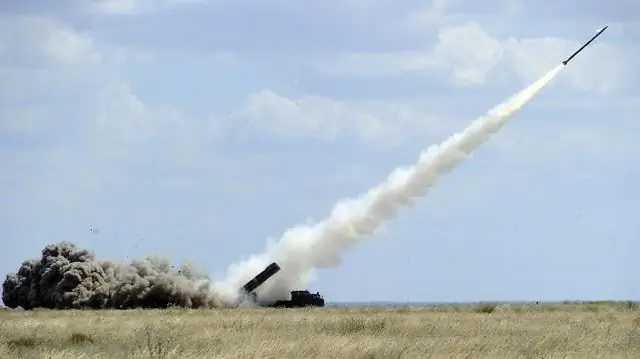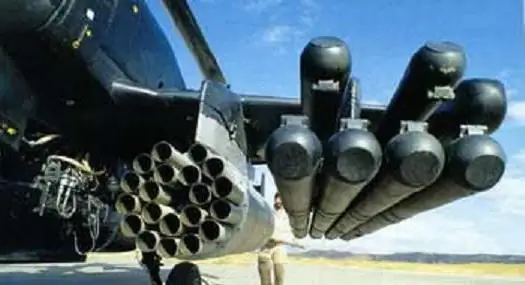2026 Author: Howard Calhoun | [email protected]. Last modified: 2025-01-24 13:10:33
"Whirlwind" - a laser-guided missile from the Russian anti-tank missile system (ATGM) 9K121 "Whirlwind" (according to NATO classification - AT-16 Scallion). It is launched from ships, as well as from Ka-50, Ka-52 helicopters and Su-25 attack aircraft. It was first shown in 1992 at the Farnborough Air Show.

Development history
The Vikhr complex was developed in the former Soviet Union as an analogue of the American AGM-114 Hellfire ATGM. Work began in 1980 and was carried out by Tula designers from the KBP under the leadership of A. G. Shipunov. The first copies were delivered to the troops in 1985. What further fate did the Vikhr rocket have? Tests of the complex on V-80 helicopters and Su-25T attack aircraft, carried out in 1986, confirmed its high efficiency. In the future, the complex underwent modernization, which ended in 1990. However, due to the tense financial situation, only a small number of finished products were purchased for the Russian troops for testing purposes. Serial production began in 2014, and the firstthe complexes were delivered to the Russian Armed Forces at the end of 2015 to equip Ka-52 helicopters.

ATGM options
Two variants of this anti-tank complex are known:
- 9K121 Whirlwind is an early version that was fully developed in 1997. What ammunition was equipped with this complex "Whirlwind"? The 9M127 missile with a firing range of up to 8 km was part of it. Its guaranteed armor penetration was 900 mm.
- 9K121 "Vikhr-M" - serial modified version. It includes the Vikhr-1 missile (standard designation - 9M127-1) with a range of up to 10 km, equipped with a tandem charge that can penetrate armor up to 1200 mm.

Basics of missile striking ability
What are the features of the Vikhr ATGM? The complex's missile is designed to destroy vital ground targets, including armored ones equipped with primary or secondary explosive reactive armor (dynamic protection). Almost all anti-tank ammunition works on the basis of a cumulative action, that is, by piercing the armor with a jet of hot metal. Explosive reactive armor can only be penetrated by multiple hits in the same place. This principle is implemented in tandem munitions, such as the Vikhr-1 rocket, which has two shaped charges fired in quick succession. It is almost impossible to hit the same place on the armor without tandem charges.

CompositionATGM "Whirlwind"
The Vikhr-1 missile is a warhead of the Vikhr-M anti-tank complex, which also includes the following components:
- launcher for aircraft (helicopters, planes) type APU-6 or APU-8;
- automatic vision and aiming system type I-251 Shkval-M.
The Shkval-M automatic sighting system developed by the Krasnogorsk Zenit plant is equipped with television and thermal imaging (infrared) aiming channels, a laser beam channel for missile control, a laser rangefinder, an automatic target tracking unit, a digital computer and a rocket stabilization system in flight in two planes. The I-251 system provides target detection and identification in the daytime and at night, automatic target tracking and missile guidance, and provides accurate information for artillery and rocket fire.

Aiming technology
If the target coordinates are previously entered into the on-board digital computer complex (OBCC) of a helicopter (aircraft), in whose memory a map of the flight area should be stored, then when approaching the target at a distance of 12-15 km, the Shkval-M system is automatically turned on . If the coordinates of the target are known only approximately, then the aiming system of the Vikhr-M complex is turned on by the pilot. She begins scanning the area over the television (or thermal imaging) channel, displaying the results on the TV screen in the cockpit.
After the target appeared on the TV screen, the pilotturns on the maximum magnification mode, identifies the target and points the reticle mark on its image. After that, the Shkval-M system is transferred by the pilot to auto-tracking of an identified target. In this mode, the pilot must keep the helicopter in such a position relative to the target that it is within the limits of the azimuth angle (up to ±35°) and elevation angle (from +5° to -80°) acceptable for the tracking equipment. When the permitted firing range is reached, the Whirlwind anti-tank missile is automatically launched. You can simultaneously launch two missiles at one target or fire up to 4 targets for half a minute.
Missile "Whirlwind": characteristics
The missile is designed to destroy armored ground targets, including those equipped with primary or additional explosive reactive armor, at a distance of up to 8 km when firing from a helicopter and up to 10 km from an aircraft in the daytime (up to 5 km at night), as well as to destroy air targets, provided they are covered by air defense systems. It is equipped with both contact and proximity fuses. The latter allows you to hit air targets when approaching them at a distance of up to 5 m.
The rocket's flight speed is supersonic and reaches 610 m/s, so it travels a distance of 4 km in 9 s. At the same time, the ATGM of the AGM-114K Hellfire complex takes 15 seconds to cover this distance, since it flies at subsonic speed.
At a 90° angle, the missile is guaranteed to penetrate 1000 mm thick homogeneous steel armor.

Rocket design
The combat charge of the rocket is made in tandem and spaced along its length. The leading shaped charge is located in front, behind which there is a drive of four aerodynamic rudders capable of moving out of the niches in the direction backward relative to the rocket's travel. Next is the second combined warhead, which has both cumulative and high-explosive fragmentation parts.
Behind the warhead there is fuel for the propulsion engine and the solid propellant engine itself with two nozzles directed at an angle to the rocket axis. Here, in the tail section of the rocket, there is an instrument container with control system equipment, as well as a laser beam receiver.
In the rear part of the body there is an aerodynamic plumage of the rocket in the form of four pentagonal wings bent clockwise (when viewed from the nose of the rocket), which before launch (when inside the transport and launch container (TPC)) are adjacent to the body, and then opened using a special mechanism.
The presence of controlled wing-wings in the front part, as well as uncontrolled ones in the rear, allows us to attribute the aerodynamic configuration of the rocket to the "duck" type.
The operation of rocket mechanisms during launch and flight
It is transported in a fiberglass-reinforced plastic TPK, from which it starts under the action of a powder pressure accumulator. When starting, there is a small release of burnt gases from the rear end of the TPK. Immediately after leaving the launch container, the wings extend and the rocket engine starts. The laser sight is located at the stern of the missile, which seeks tostay in the laser beam while flying.
Aiming the laser beam at the target is a guarantee of high-precision shooting, which does not decrease with increasing target range. At the same time, the radiation power of the laser sight is so low that it turns out to be an order of magnitude less than the threshold response power that foreign laser irradiation signaling systems have. This provides the ultimate secrecy of the use of weapons. The Whirlwind missile is capable of destroying a moving small-sized tank-class target with an 80% probability.
Recommended:
ZRK "Vityaz": characteristics of the anti-aircraft missile system

SAM "Vityaz": description, features, photo, purpose. Anti-aircraft missile system "Vityaz": characteristics, modifications, operation
Anti-aircraft missile system. Anti-aircraft missile system "Igla". Anti-aircraft missile system "Osa"

The need to create specialized anti-aircraft missile systems was ripe during the Second World War, but scientists and gunsmiths from different countries began to approach the issue in detail only in the 50s. The fact is that until then there simply were no means of controlling interceptor missiles
"Moskva", missile cruiser. Guards missile cruiser "Moskva" - the flagship of the Black Sea Fleet

When was Moskva commissioned? The missile cruiser was launched already in 1982, but its official use begins only in 1983
"Alder" - missile system: characteristics, tests. Ukrainian 300-millimeter corrected combat missile "Alder"

It's no secret that active hostilities are taking place on the territory of Ukraine. Perhaps that is why the government decided to create a new weapon. Alder is a missile system, the development of which was started this year. The government of Ukraine assures that the rocket has a unique technology. You can find more detailed information about the testing of the complex and its characteristics in our article
"Mace" (rocket): characteristics. Intercontinental ballistic missile "Bulava"

"Mace" is one of the latest developments in domestic rocket science. Until now, tests are being carried out on this object. Some of them were unsuccessful, which caused a lot of criticism from experts. It is safe to say that the Bulava is a rocket whose characteristics are truly unique, and you will learn what exactly in this article

